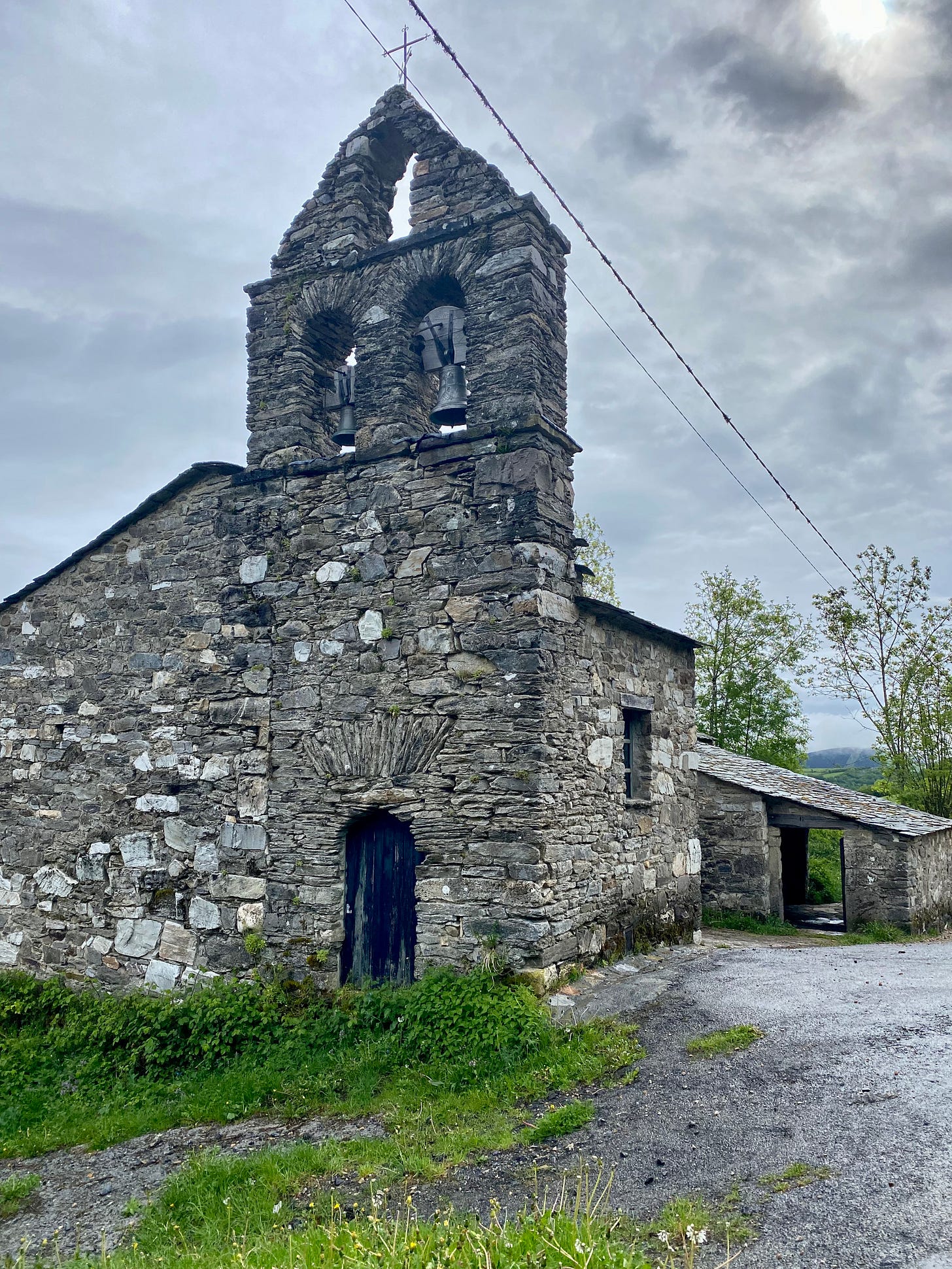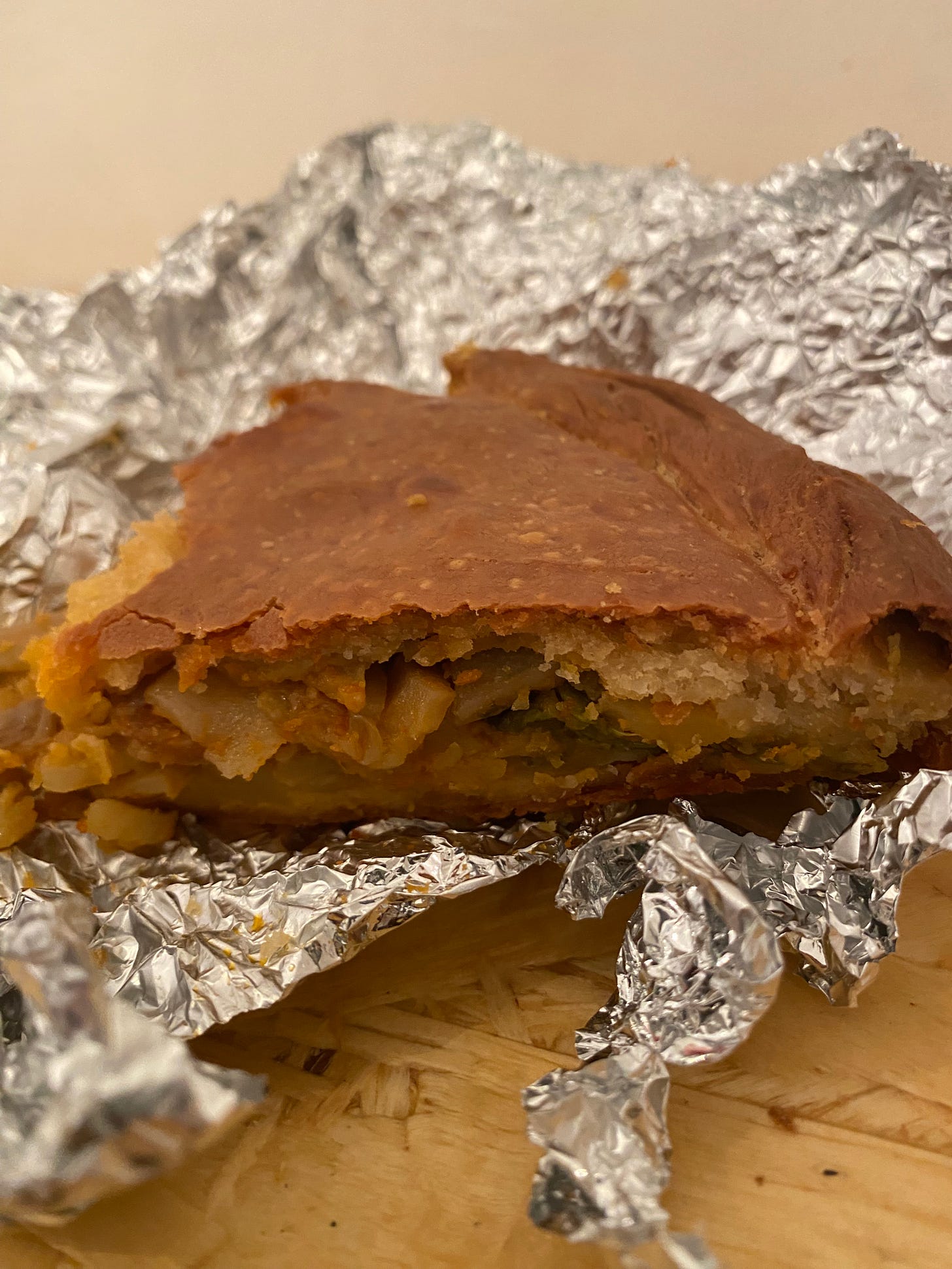For the month of August, I’ve accepted David McIlroy’s 30 days of writing challenge ✍🏻
The Inner Traveler is a digital cafe where chairs are pulled up, warm beverages are poured, gorgeous pastries are on the bar, and baskets of warm blankets tucked into corners. It’s a humble invitation into my inner world.
If you’d like to show your appreciation, buy me a croissant. It pairs wonderfully with coffee...and life in general.
Today’s post was supposed to be about buttermilk biscuits. Don’t worry…I promise, tomorrow you’ll get the biscuits.
However, yesterday’s post on Galicia, Spain felt a bit incomplete, so I was inspired to do a part 2 continuation post.
Before we dive in, hit play on the playlist below. Perhaps leave it on whilst reading, so as to really feel the essence of Galicia.
The Gaita
What you’re hearing is a bagpipe called the Gaita, the traditional instrument of Galicia and northern Portugal.
Now do you see why everything about Galicia feels different?
Wikipedia says:
The linguist Joan Coromines has suggested that the word gaita most likely derived from a Gothic word gait or gata, meaning "goat"; as the bag of a gaita is made from a whole, case-skinned goat hide. Gothic was spoken in Hispania from the fifth century to the eighth century when the country was ruled by the Visigoths. The Visigoths originated in north-eastern Europe.
Hórreos
Have you ever seen an hórreo? At first glance you might think “look, a hobbit house”.
Alas, no.
These granary structures are everywhere in Galicia, though mostly a relic of the past. Hórreos always sit above ground, atop pillars with a wide surface area in order to keep rodents and moisture out.
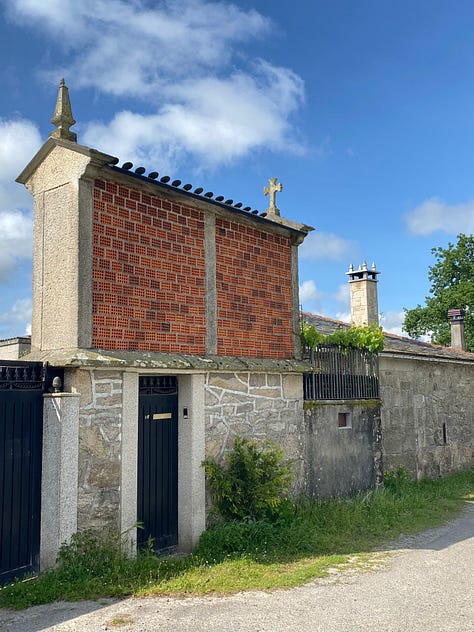
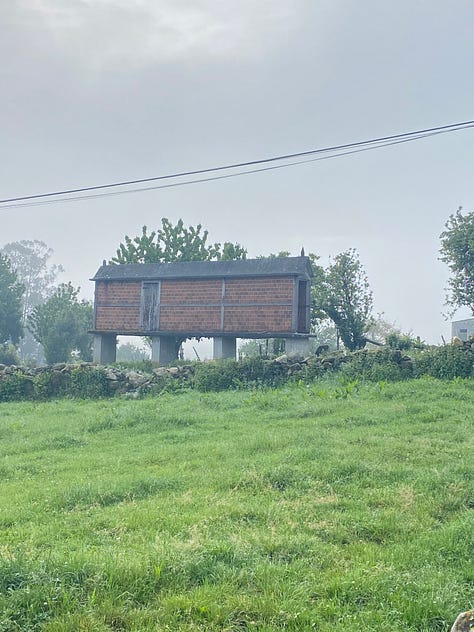

Galician Graveyards
Again, another common sight in Galicia, and not your typical graveyard. Hauntingly beautiful, these graveyards are above ground with crosses dotting the tops of facades.
I snapped a photo of this gentlemen, born in 1900, and his wife. I liked his dapper hat and his wife’s no nonsense hairstyle…and stare.
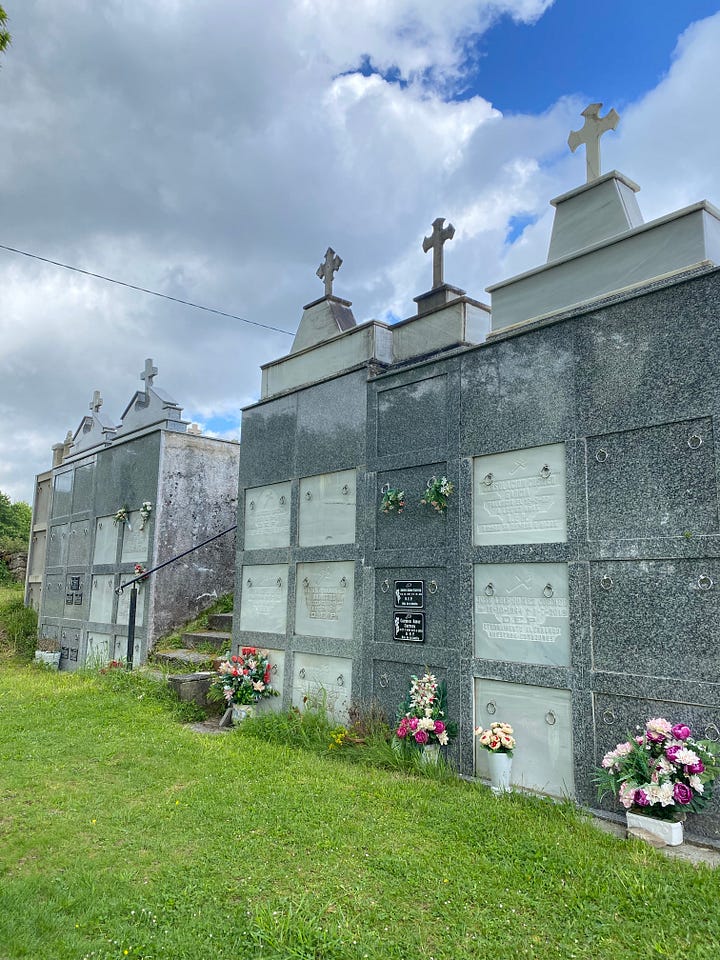
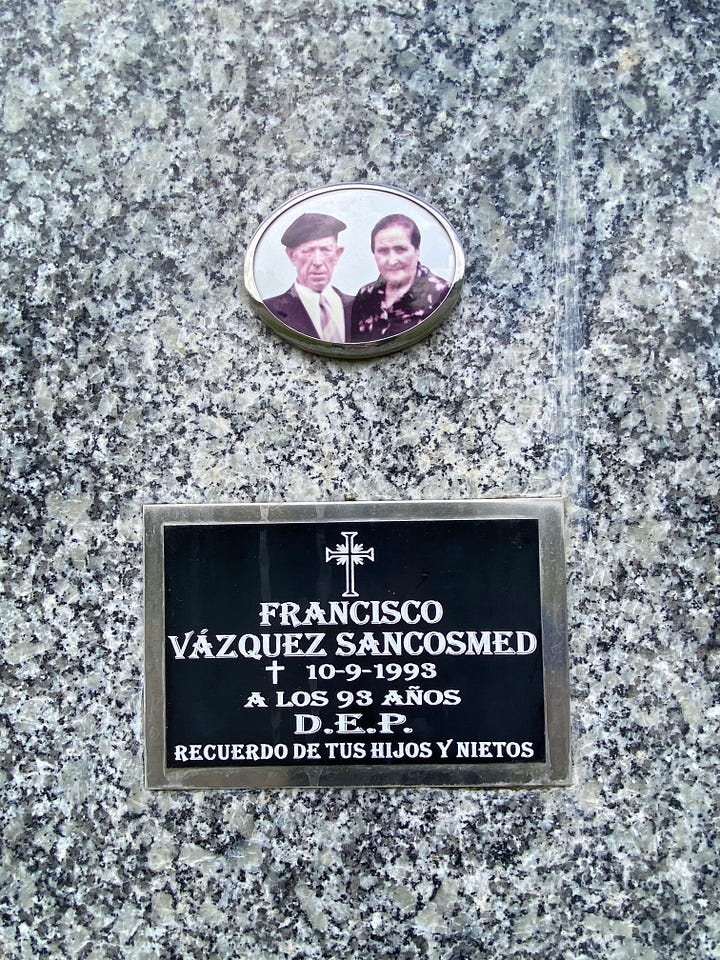
Empanadas
Whoa wait, like the ones you find in Argentina?
No, like the kind you find in Galicia. These babies are the mother empanadas and they are DALISHUS.
Empanada Gallega come in a double-crusted slab form, not individual hand pies. Still, very portable.
The base typically starts with a mixture of onions, green or red peppers and garlic. Galicia being a coastal region, it’s not uncommon to find bonito or tuna tucked inside the pastry.
And that pastry, ugh it’s so good. It’s buttery, yet not a butter-based dough. It uses olive oil, flour, salt, water, and yeast. Some recipes use white wine-depends on the cook, I imagine. My favorite variation: a bit of oil leftover oil from the sautéed peppers and onion mixture, drizzled into the dough.
Here’s a slice of that goodness, close-up.
Pulpo
Iconic Galician dish. Boiled octopus, cut into pieces, lashed with olive oil and a dusting of paprika. Served with a toothpick and a cup of rustic red wine.
Ok, NOW that feels complete.
Tomorrow: buttermilk biscuits….




